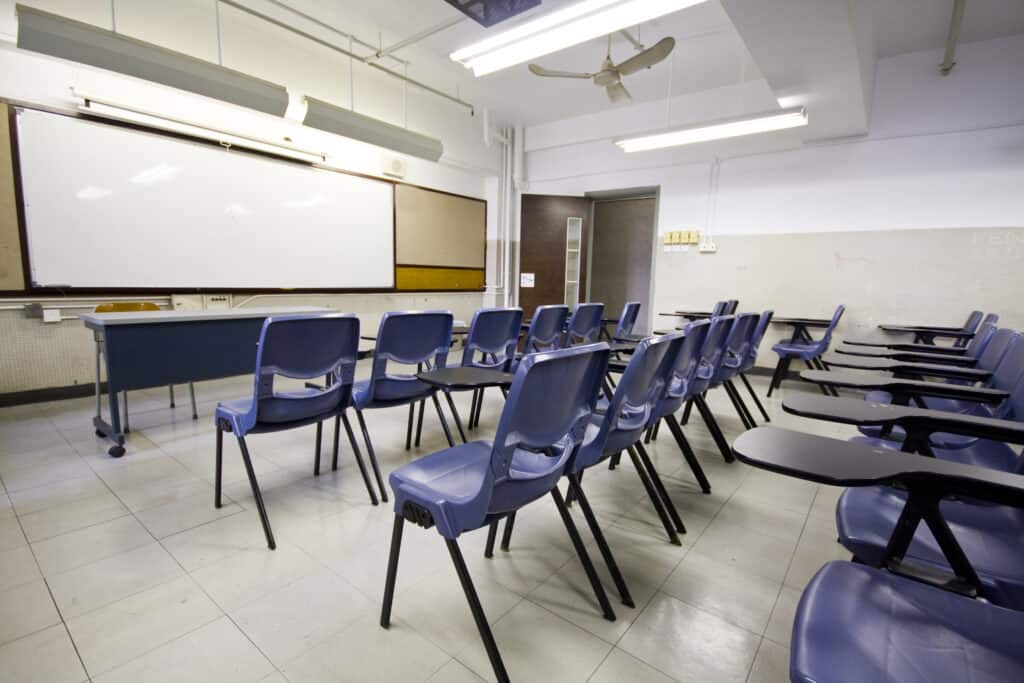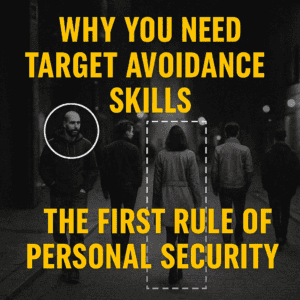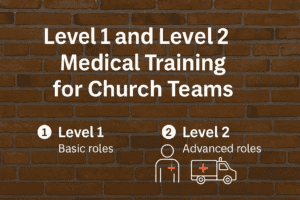When it comes to making classrooms a safer space, the options are almost as varied as opinions. We also have our opinions as to what works and what doesn’t. Let’s take a bit of time and discuss hard corners and why we believe this is something you should be aware of.
A hard corner is a section of a room or classroom where occupants are not visible from the hallway through openings like a window or door. With this concept, angles are used to conceal occupants from threats exterior to the classroom by being outside their line of sight.
Let’s dig into this topic a little deeper so you can understand how to utilize this concept to potentially increase the safety of your classroom during active killer events.
Where did the concept of hard corners come from?
The concept of hard corners gained popularity after the tragic school shooting incident at Marjory Stoneman Douglas high school in Parkland, FL, on February 14, 2018.
During this incident, a student who had been expelled from the school returned to shoot and kill 17 individuals while wounding 17 more.
As you can imagine, this tragedy was looked at and studied to a great extent and there were many reports and findings released as a result.
One of the reports was a product of the Marjory Stoneman Douglas High School Public Safety Commission.
The Commission was formed to specifically analyze information from the Marjory Stoneman Douglas High School shooting and other mass violence incidents and provide recommendations and system improvements to help mitigate the impacts of and prevent future school shootings.
Hard corners were one of the many recommendations and topics that was discussed in this report.
How to create a hard corner
As I mentioned above, a hard corner is simply an area of a classroom that is not visible to someone looking in from a door or window.
To get an idea of what this looks like, step outside your classroom and make note of all the areas you can see inside the classroom.
Everything outside of your line of sight would be a hard corner.
Be sure to move around and look inside from as many angles as possible.
Once you have positively identified your hard corners, you can simply use painter’s tape to “mark” the line if you wish.
This is a simple, non-permanent way of designating this area to make it easier to utilize during a high-stress event. However, marking your hard corner is not mandatory.
It should be noted, designating this area does not mean you are being offered any additional ballistic advantages.
It simply means a threat will not be able to see occupants in the classroom and this may increase the odds of the threat continuing to move on.
In the case of the Parkland shooting, the shooter never entered any classrooms and only shot people within his line of sight.
Are hard corners enough?
The obvious answer is NO.
There is not one simple solution or idea that is a fix.
This is merely something to consider if you are focusing on options for target hardening.
For instance, this will do no good if you do not lock your door or if you have a non-functioning lock on your door.
This also provides little to no benefit when you have so many openings (windows, etc.) to eliminate options for a hard corner.
What can make hard corners work better?
Doors and Locks
As mentioned above, the first thing you can do is make sure your doors and locks function properly.
Window Coverings
In addition to having a properly locked door, having a way to cover your window(s) will help prevent a threat from looking into your classroom.
A window covering that is utilized only during emergencies helps maintain natural surveillance during non-emergency times.
Shut Off Lights
Shutting off your lights can be another good option for preventing a threat from seeing or identifying the occupants of your classroom.
When combined with the other suggestions on this list, it helps increase the overall effectiveness of the concept.
Clear Space
Another consideration is the layout of your classroom and whether or not furniture and other items crowd your hard corner and make it useless.
It defeats the purpose if your hard corner cannot accommodate all classroom occupants.
Good Communication
Students need to be directed where to go and why.
This should be rehearsed and practiced during school drills.
Drills are a great time to determine whether or not all your students can fit within the hard corners of your classroom.
Sound Mitigation
In addition to being outside of the threat’s line of sight, we need to make sure the threat can’t hear us.
The idea behind the concept is to make the threat believe the classroom is empty.
If they are able to hear noise within the classroom, this defeats the purpose.
Do hard corners work?
Hard corners are not guaranteed to work, but can they help…yes.
However, they are an option that can be utilized during an active killer emergency.
Again, the idea is for the occupants to be out of sight and out of mind when it comes to the threat.
The majority of active killer events are short-lived and the killers are looking for easy targets.
There is evidence to suggest a shooter may keep moving if they glance into a classroom and don’t see any targets.
It is also less common for threats to attempt to shoot through walls with the sole objective of trying to hit targets on the other side.
Again, this is a simple option that can be used in conjunction with a lot of other tools.
Looking to improve your school’s safety and security protocols? Look no further! Our team offers comprehensive training and consulting services for Guardian Programs, Emergency Operations, Safety & Security Audits, Customized Training, and more. Don’t wait until it’s too late to ensure the safety of your students and staff. Contact us today to schedule a consultation and take the first step towards a safer school environment.








